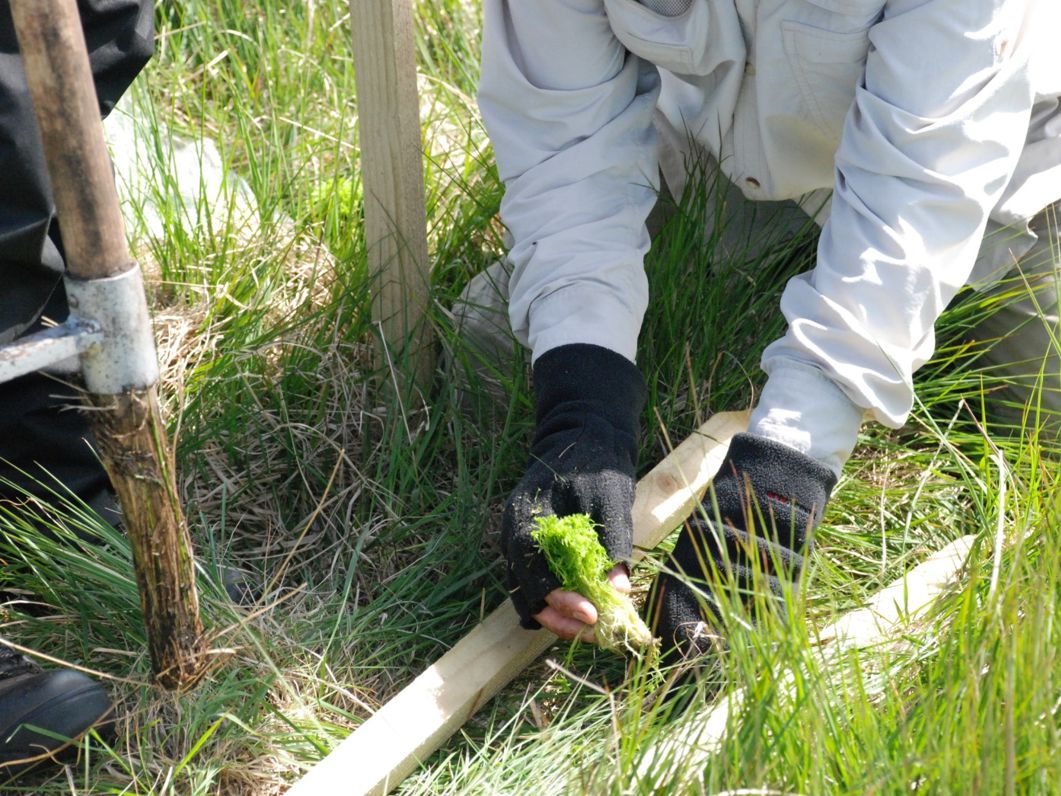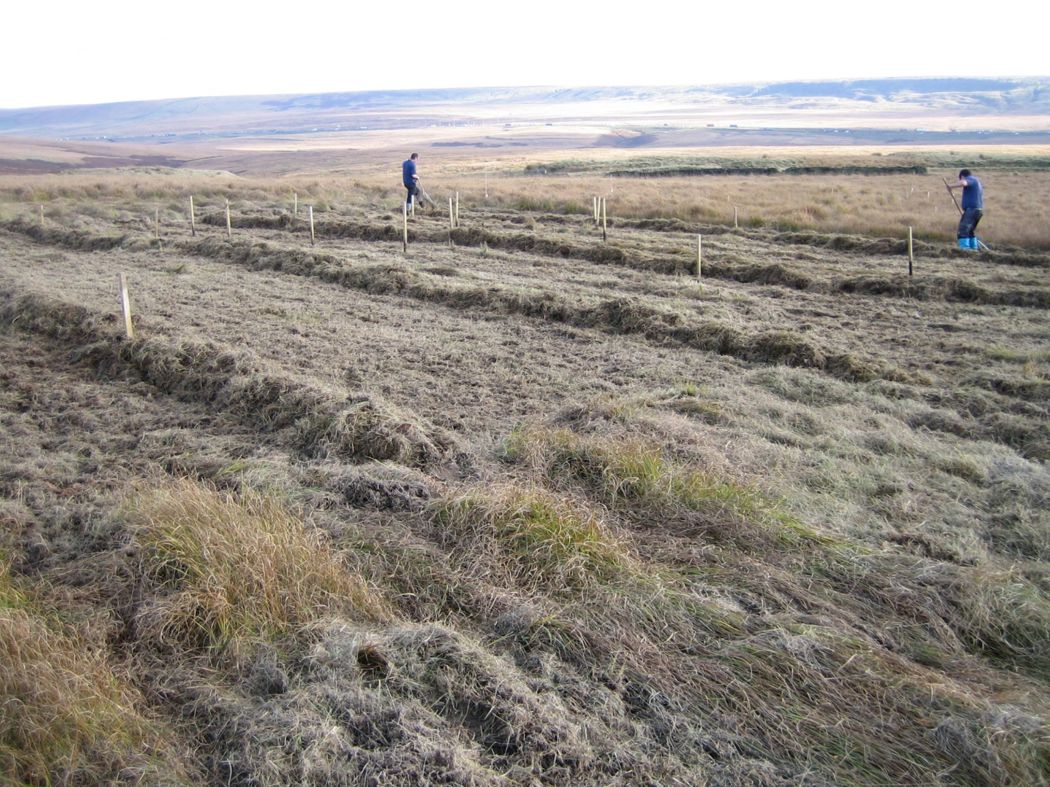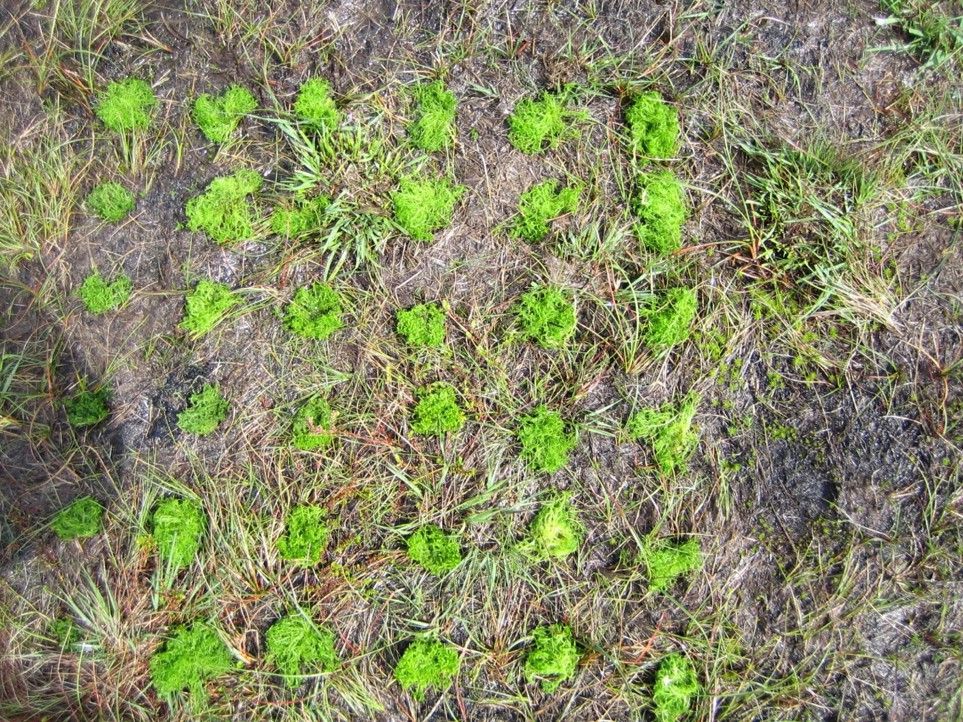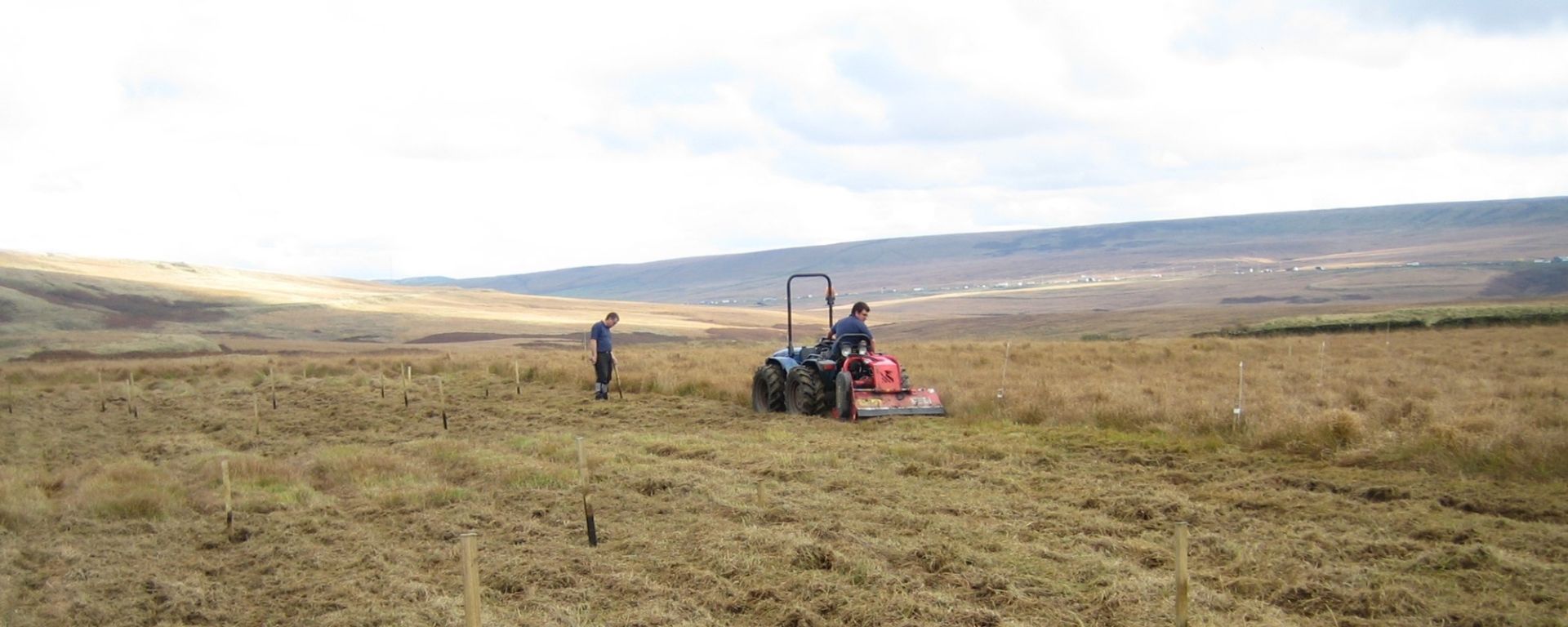The increasing dominance of the invasive purple moor grass (Molinia caerulea) on blanket bogs is a growing threat to diversity and carbon storage. In this post, practitioners from Moors for the Future Partnership give their account of the team’s latest research attempting to reverse these effects.
Reducing the domination of Molinia caerulea on blanket bogs to a more Sphagnum-rich, characteristically boggy landscape has been a challenging conundrum for peatland restoration practitioners and academics alike. Our research illuminates factors and techniques influencing that habitat transition, evidenced through monitoring of successful landscape-scale restoration, so that techniques may be developed to bring about this change with greater certainty and efficiency.
– Chris Fry, Conservation Quality Manager
Peatland conservation has been dogged by Molinia domination since Moors for the Future Partnership’s (MFFP) inception. It’s a very different problem to de-vegetated bare peat and arguably more challenging to tackle. The conditions that created and maintain Molinia monocultures persist and, if anything, seem to have passed a tipping point where restoring ecological function without intervention is impossible.
As covered in the article, peatland practitioners have trialled numerous methods – and combinations of methods – to address the problem. However, these interventions manage the symptoms of an unhealthy habitat rather than instigate lasting change on to a trajectory of recovery. What this work shows is that one of our most effective options for diversifying Molinia, without inadvertently affecting other important species as a side-effect, is one of the most simple: planting tiny mosses.

From my experience working in the South Pennines, Molinia domination is a big problem on a big scale: thousands of hectares. It’s not seen as an urgent problem in the way bare peat is, but it’s an indication that something is very wrong. It’s not great for wildlife, farmers or for providing us the ecosystem services a healthy peatland would. It’s also at huge risk of catching fire every spring and summer; a time when birds have eggs on nests.
I’ve seen it treated with varying combinations of glyphosate poisoning, burning, cutting and reseeding. The results have been either turning a monoculture of one species into a monoculture of another or the need to repeat the interventions in following years. The most successful combination I’ve tried involved cutting and Sphagnum planting followed by cattle and sheep grazing (stock attracted to the new growth). Even then, the Molinia is recovering more quickly than anything else, and will likely need future intervention, because the conditions there are still the ones that favour Molinia.

But this work, which provides another piece of the puzzle, gives me hope for the Sphagnum and there is more on the horizon to be optimistic about. As well as using Sphagnum to diversify Molinia and begin to affect the hydrology enough to advantage itself, using water more directly can be effective at controlling Molinia’s vigour.
I’ve seen this done to great effect in Belgium, where bunds have been used to waterlog areas of Molinia-dominated bog, changing the vegetation to sedge/Molinia mix and through to a mix of sedges, grasses and Sphagnum in 5-7 years. As I write, MFFP is innovating ways to bring these ideas to UK blanket bog applications.
– Dewi Jackson, Conservation Works Officer
Currently, MFFP is involved in trialling the application of bunds to tackle Molinia in the South Pennines. The trial which is only two years old, aims to show that pools of water collecting behind peat bunds (which are between 100mm – 200mm high) will hinder the growth of Molinia.

So far, we have seen year-on-year decreases in Molinia cover, for ‘contour’ bunds (60m long thin mounds of peat, 200mm high), and there are also signs of a decrease when using ‘scallop’ bunds (individual horseshoe shaped mounds of peat, 200mm high) but this has not been seen across all plots.
The final bund type, termed ‘fish scale’ (interconnected horseshoe shaped mounds of peat), have not so far shown an average decrease. The pools of water created by the bunds are also ideal for growing Sphagnum, and we anticipate positive results from this and other trials in the near future.
– Paul Titterton, Research and Monitoring Officer
Read the full research: “Diversification of Molinia-dominated blanket bogs using Sphagnum propagules” in Issue 2:4 of Ecological Solutions and Evidence.

I have an upland boggy forest in mid wales having sitka, sphagnum, Molinia, heather and soft rushes + others. Some flooded spruces were sited on a plateau and the water prevented from draining down a vertical 6 foot bank by the amazing roots of molinia. I dug a drainage channel (to improve sitka growth) with an all steel ditching spade with great effort to remove the roots : the noise of the lifting roots indicated a complete seal to water and air. Therefore I suggest that Molinia contributes positively to upland peat by maintaining stagnant water which would otherwise drain away too quickly for sphagnum to grow. Presumably it also helps to prevent flooding lower down. It also appears that sitka needles in flooded forested areas generate a non-sphagnum peat which must also store carbon. The ridges made to plant the spruce also allow variation in water depth and both molinia, sphagnum and spruce to flourish. The peat depth varies from about 40 to 70 cm in the few places I have measured so far. I have been considering whether spruce or peat would be best for the planet. At the moment it seems that the diversity generated by the varying bogginess, which also generates other natural diversity, may well be the best solution for carbon storage, natural environment and my back!
LikeLike